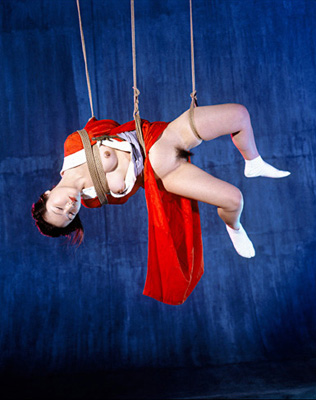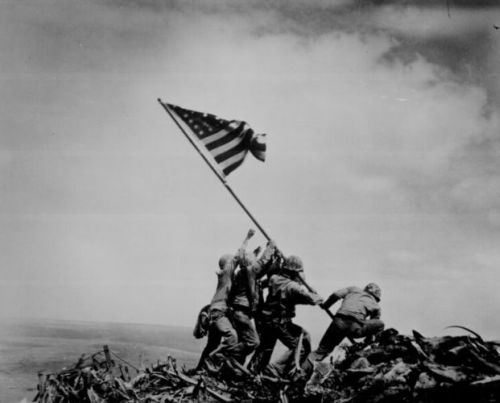A.D. Coleman, the NY Times' first photo critic now has a blog. Seems like no one can resist switching over to the 'dark side' that is the blogosphere anymore.
(via J. M. Colberg)
A.D. Coleman, the NY Times' first photo critic now has a blog. Seems like no one can resist switching over to the 'dark side' that is the blogosphere anymore.
(via J. M. Colberg)
I just came across the website of Hin Chua, a Malaysian-Australian photographer living in London. There is a bunch of interesting work there, although I found the After the Fall series to be his strongest (with a preference for Part I). It is pretty ambitious ("a meditation on that altered yet fundamental bond, examining the precarious ever-shifting dynamic between [...] man and nature") and not quite focused enough, but there are a lot of strong images there and I prefer too much ambition to too little. I also enjoyed They called me a corporate whore, probably because I also used to work in the City as an investment banker and it is something that is nice to be able to look BACK on.
 Daniel Templon is currently exhibiting a recent series of Araki's bondage photographs, work which has been doing the rounds for some time now with shows in Tokyo, Berlin, Oslo and London. The Paris show includes 15 large-format (150 x 120cm) colour digital prints of images taken in the past couple of years.
Daniel Templon is currently exhibiting a recent series of Araki's bondage photographs, work which has been doing the rounds for some time now with shows in Tokyo, Berlin, Oslo and London. The Paris show includes 15 large-format (150 x 120cm) colour digital prints of images taken in the past couple of years.
For anyone who was at last year's edition of Paris Photo (Japan was the 'guest' country), this work will be familiar. Araki is one of the very few Japanese photographers to have succeeded in building himself a global reputation, and you will always come across a few of his prints at any major photography fair. However at Paris Photo it really felt like overkill to me: his large-format bondage images popped up on so many booths that I kept getting confused about where I was.
This Paris exhibition, Bondages, is trademark Araki: kimonos, plastic godzillas, bondage rope, flowers, the odd dildo, and as much female flesh as possible. The images are undeniably striking and, although this is far from new ground for Araki, the move to large-format colour may even succeed in accentuating their provocative impact. During my visit to the show a group of Parisian thirty-somethings fresh from the squash court giggled their way around the room, faces pressed up against these life-size sexual fantasies, while an elder couple of apparently regular collectors (she clearly unimpressed, he secretly enjoying himself) asked one of the staff for an explanation as to why on earth these images were even worth looking at.
However, I can't help wondering whether Araki is actually playing it a bit safe here. He is undoubtedly a diverse photographer, from his early Satchin and Mabo series to his photographs of Tokyo and, my personal favourite, the work that he did on his wife (Sentimental Journey and Winter Journey). But recently he has been in danger of becoming something of a one-trick pony. I don't think it is necessarily a bad thing to continue returning to an idea, concept or even an aesthetic over a long period of time. The thing that bothers me is that it feels like Araki keeps coming back to bondage because that is what the market is asking him for. The intimacy of his early bondage photographs has gone and it is being replaced with something more akin to performance. The problem I have with many of these images is that they seem to be playing up to a Western fantasy of an exotic Japanese sexual sub-culture and, given how ubiquitous Araki has become, contributing to the myth that this is what all Japanese photography looks like. These images leave me feeling that, instead of being introduced to a strange private world, I am being duped.
Rating: Worth a look
Further reading: Vice magazine interview with Araki which is refreshingly unlike every other photographer interview you have ever read. (via mcvmcv)
This is a smart idea from Olef Wolberger (Horses Think): start a virtual collection of photographs. Provided you don't go overboard and start 'acquiring' dozens of images each week, this seems like an interesting way of getting into the collecting mind-set. I think it could also help to think about why you want a particular image, and to live with it a bit to see if it really is something you would want for your real collection.
 The excellent dispatches magazine recently organized a debate at Brooklyn's VII Gallery with Gary Knight, one of the magazine's co-founders, and Tim Hetherington, a young photo-journalist (and 'thinker') who has made some interesting attempts to break out of the dark corner in which photo-journalism finds itself. The debate is available in its entirety on the dispatches website and is well worth a look.
The excellent dispatches magazine recently organized a debate at Brooklyn's VII Gallery with Gary Knight, one of the magazine's co-founders, and Tim Hetherington, a young photo-journalist (and 'thinker') who has made some interesting attempts to break out of the dark corner in which photo-journalism finds itself. The debate is available in its entirety on the dispatches website and is well worth a look.
At the conversation I attended earlier this week one of the panellists, a former journalist for the NY Times, kept steering the discussion towards his experience of photo-journalism, blurring the lines between it and photography. I found that there was a palpable feeling of discomfort in the air each time that he drew this parallel: as if 'photo-journalism' has become a dirty word which is not really supposed to be mentioned in a discussion of Photography with a capital 'P'. The fence (or is it barbed wire?) between these two fields has always seemed a little artificial to me and thankfully up-and-comers like Hetherington are contributing to tearing holes in it (see Sleeping Soldiers for a good example of this). I have been wondering whether the recent turmoil that is hitting newspapers and magazines (the traditional homes of photo-journalism) so hard is going to further contribute to blurring this distinction. In the dispatches debate the Knight explained his concern that the only images of war that get distributed are overly legible, presenting the extremities of war (tragedy, suffering, violence) and not the body of it. This used to be precisely what photo-journalists searched for in conflict photographs—James Nachtwey still seems to think that by presenting the most dramatic forms of these images that he can single-handedly change the course of history—but thankfully this is changing. Maybe that, as photo-journalists are forced to find new ways of distributing their images, we will start to see a less selective picture and one which will be a lot harder to categorise as unrelated to 'fine art photography'.